The MG Comet EV is as small as a .zip file. We try to extract its true potential in the urban jungles of Delhi.
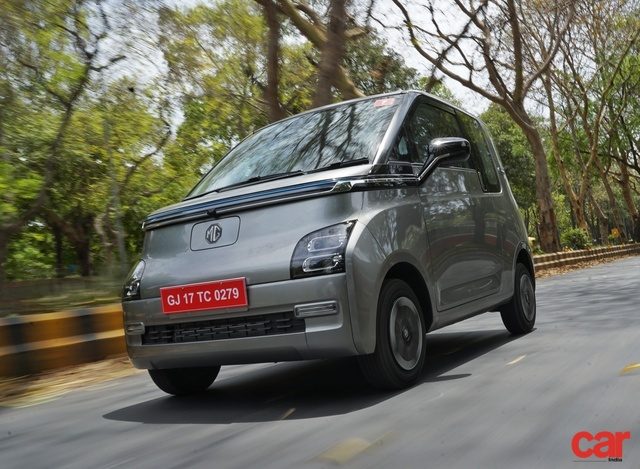
Story: Joshua Varghese
Photography: Apurva Ambep
In a so called “developing country” as populous as ours, space is becoming more of a luxury with each passing day. Roads have been widened to ease congestion, but they are now jam-packed once again because the number of vehicles plying on them have shot up exponentially. The average speed comes down from 60 km/h to 60 m/hour at times and parking has also become a nightmare. In such a situation, size does matter. The MG Comet EV is a two-door, four-seat, fully electric compact car that is just the right size to deal with the chaos of the aforementioned urban jungle and we drove it in one of the densest ones in India, namely, the capital city of Delhi.
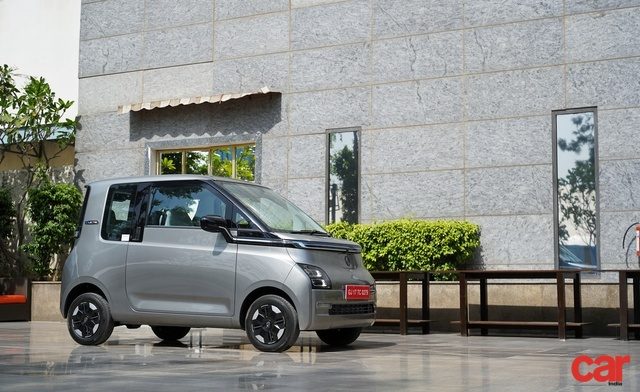
The MG Comet EV is unlike anything we have seen in the Indian car market to date; nevertheless, it is not an all-new car. MG’s parent company, SAIC, also own the Chinese car manufacturer, Wuling, and the Comet EV is essentially a re-badged Wuling Air EV. Regardless of that, the first thing anyone is going to notice about this car is just how tiny it is. This MG is less than 10 feet long and just below five feet wide with a shape that reminds one of the Japanese kei cars; with the small 12-inch wheels only adding to that impression.
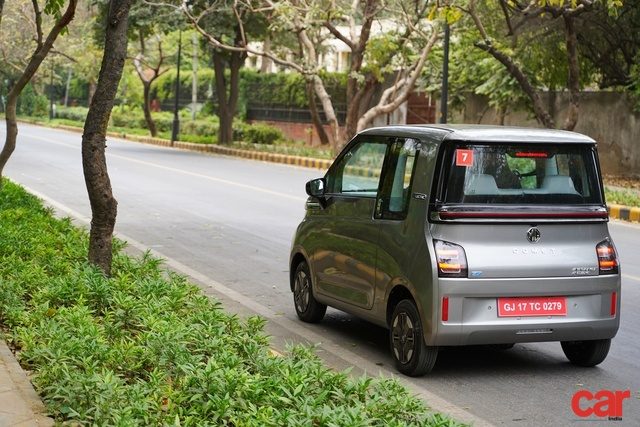
The Comet EV does not get a functional bonnet and the shape of the front end has more in common with a van than a car. A DRL strip runs the width of the front just above the charging port and LED headlights are placed above the bumper. Just as the windscreen commands most of the front, the doors dominate the car’s rather simple profile. I also appreciate how MG have extended a chrome strip from the DRL to the wing mirrors, complementing the shoulder-line. Aircraft-style windows for the second row form the rest of the car’s side view. Meanwhile, the tail of the car features a generous glass area which meets a shapely rear end, completing a rather cute form overall.
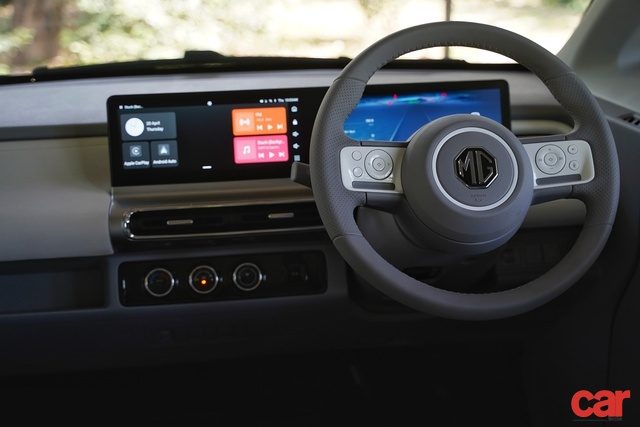
While the exterior may not be to everyone’s taste, MG have given the Comet a particularly tasteful interior. What impressed me the most was how cleverly they have used the space available to offer two rows of seats wrapped in dual-tone fabric upholstery. Despite being a fairly tall person, I was able to find a comfortable driving position where most of the controls were within easy reach. However, the placement of the rear-view mirror was rather weird. It significantly obstructed my field of vision towards the left of the car and, therefore, took some getting used to. I hope MG find a work-around for that soon. Ingress and egress into and from the back of the cabin are easily managed by a lever on the front seat. It slides and reclines the seat forwards, revealing just enough room to climb into the second row. Even with the driver’s seat pushed all the way back, I was reasonably comfortable there, very similar to my plight in an economy airline’s seat. The fixed rectangular windows further added to that point of view but the seats are good enough for two adults over short distances.
Initially, the boot volume may fail to impress one, but a quick pull on a couple of tabs folds the rear seats flat, revealing a more usable space which is almost as good as a regular-size car’s and certainly ample for urban use.
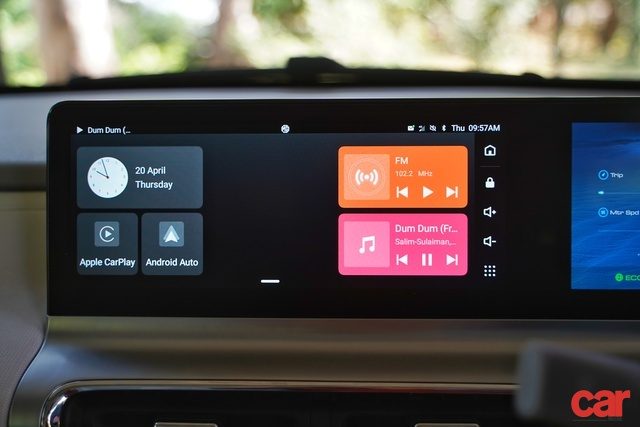
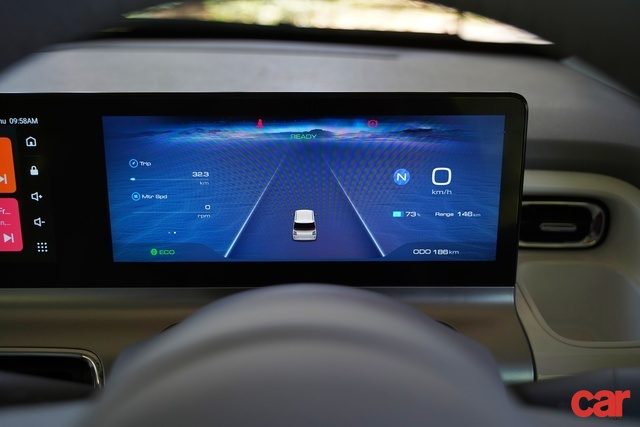
Infotainment is one of MG’s unique selling points (USP) and that holds true for the Comet as well. A floating console on the dashboard offers two 10.25-inch displays; one is a touchscreen unit while the other is an LCD that offers information without any clutter or confusion. The former offers the extremely convenient wireless Android Auto and Apple CarPlay, a feature missing even in some of the more expensive cars. Additionally, it also supports more than 55 connected car features, including a digital key that can be shared between two persons. The steering wheel is a nice two-spoke unit that is wrapped in artificial leather and it features buttons that are reminiscent of the first iPod, although a few of them do not appear to have any purpose to serve. Although there are small storage spaces around the cabin, it is rather surprising that there is no glovebox.
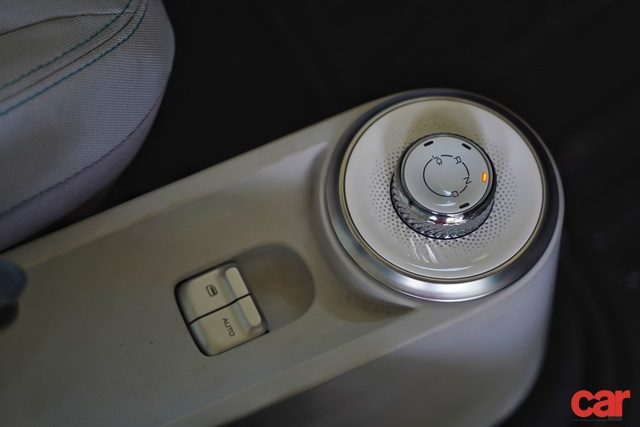
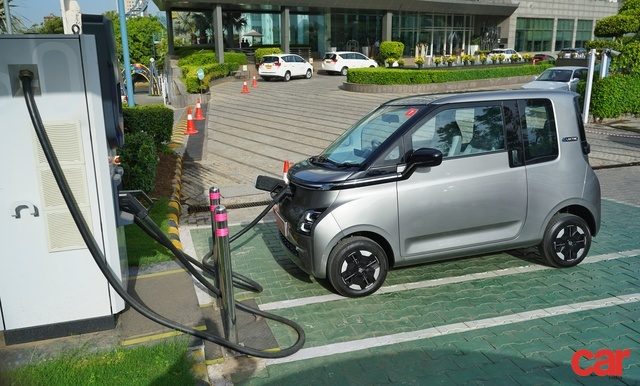
A permanent synchronous motor is placed at the back where it drives the rear wheels while developing a modest 42 hp and a usable 110 Nm of torque. Power comes from a 17.3-kWh lithium-ion battery that is located in the floor of the car. It uses a 3.3-kW on-board charger and MG claim that it can recharge from 0 to cent per cent in seven hours while 80 per cent comes up in five. They also claim that this car will return as much as 230 kilometres off a single charge.
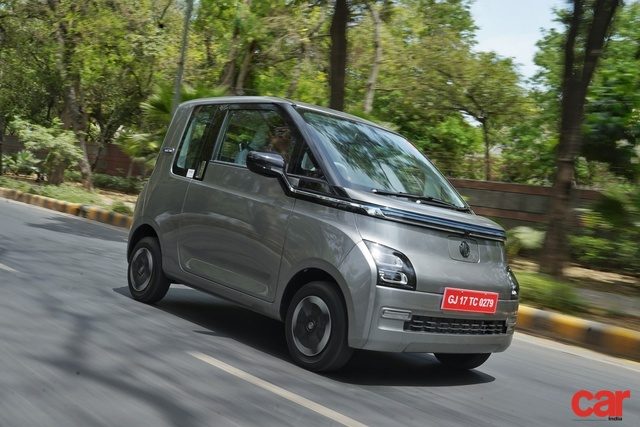
To validate all this, I used the knob on the centre console to select drive and merged into the traffic headed towards Old Delhi. It was impossible to ignore just how small this car was once we were on the road. Occupying just a little more space than two motorcycles abreast, the MG Comet was in its element on Delhi’s busy streets. While larger cars had to wait for gaps to switch lanes, the Comet only needed half the room and had already completed the overtake manoeuvre before anyone was any the wiser. With a low centre of gravity, rear-wheel drive, and a positive and responsive steering, the little car was as fun as it was easy to drive. In sections where the maximum possible speed was between 40 and 50 km/h, the Eco mode was just right. There was enough power to pull off quick overtakes without expending precious charge. For faster travel, Normal mode is highly encouraged and for faster still, Sport is the mode you need. In my experience, Eco and Normal are all that one will ever require in town because this compact car is more comfortable cruising around at 60-70 km/h than ripping past at 90-100 km/h. Meanwhile, the top speed is electronically limited to an acceptable 104 km/h. More than enough for a small city car, is it not so? Based on my brief drive experience in Delhi, I would estimate the real-life range to be around 180 kilometres. Not bad at all.
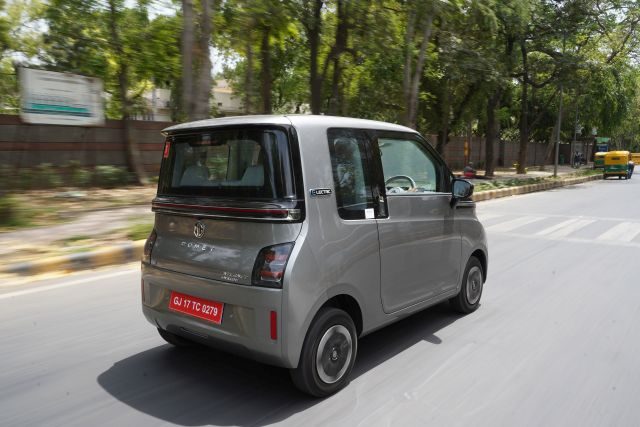
Given that this car had such small wheels, there was some prejudice about the ride quality but the MG Comet EV pleasantly surprised me because the suspension set-up works well in urban conditions. For its size, the car offers a pliant and admirable ride quality most of the time, keeping the occupants comfortable. Only large bumps and big potholes shake an otherwise excellent confidence. Around corners, it is composed up to speeds of 80 km/h, which is its comfort zone. Above that speed, the poise wanes but not to the extent that it should become a deal-breaker. Braking is managed by discs at the front and drum units at the rear and they do a good job of slowing the car down. That said, decelerating hard from high speed would have been somewhat tricky were it not for ABS and EBD intervening at the right time.
In addition to a high-strength steel body, other safety features include dual front airbags and ISOFIX child seat anchors in the rear. Furthermore, MG India assure that the battery has been put through many strenuous tests to ensure its safety under varying conditions.
All of these could be yours for an introductory price of Rs 7.98 lakh (ex-showroom) for the base variant but the one we drove was Rs 2 lakh more. That may sound like a lot for a small two-door car and rightly so, but what we have to acknowledge is that it is more than that. The Comet may convince most people with its ease of parking and driving, especially in congested cities. Furthermore, it is not far off the larger cars when it comes to the cabin experience. So, if you want a small car for moving around in town with the comfort and convenience of a regular one, then this could be just what you need. There may be other cars within that price range, but none of them as compact as the Comet EV.
Watch the full video review here:
Also Read: Hyundai Verna First Drive Review


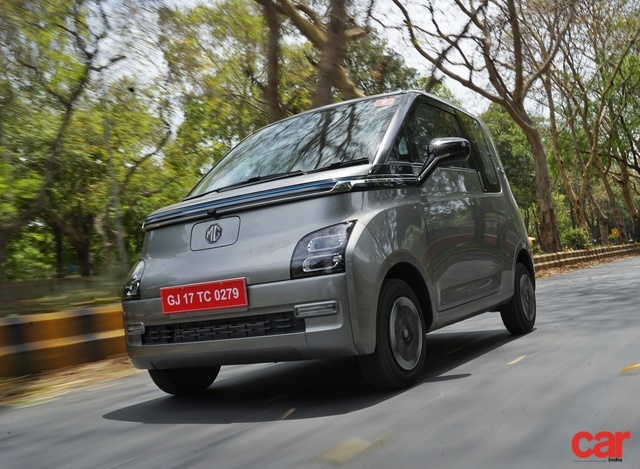


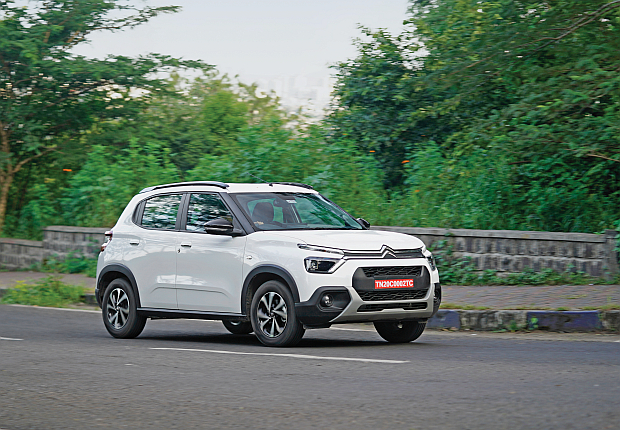
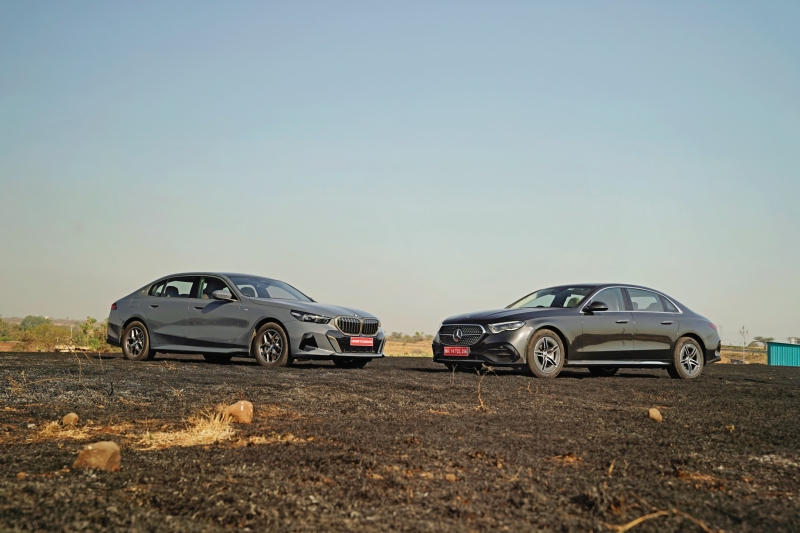

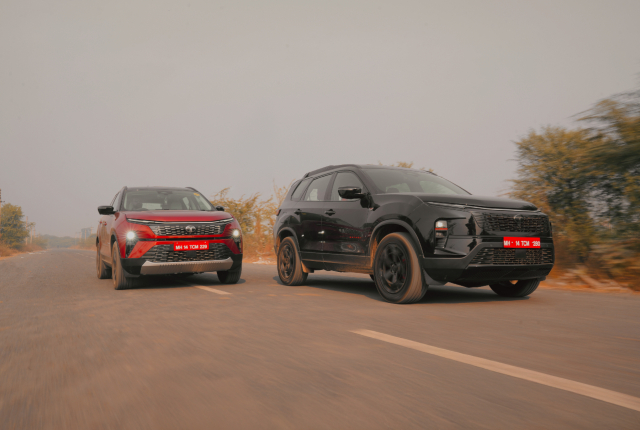
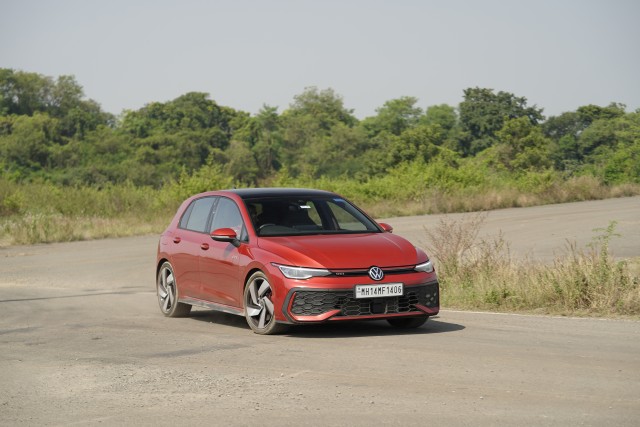










Leave a Reply